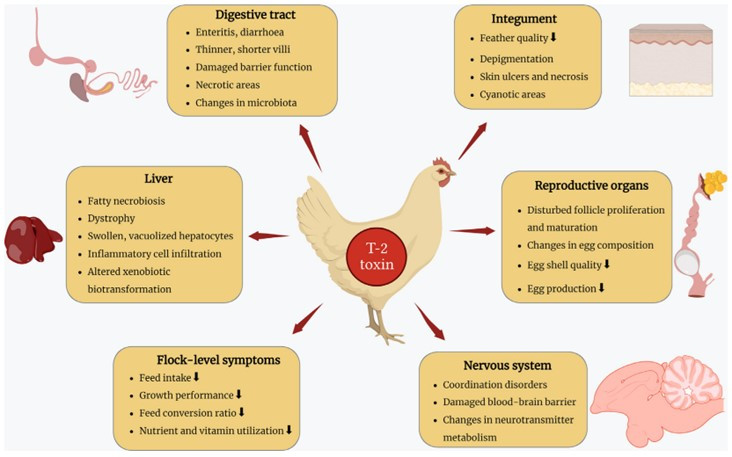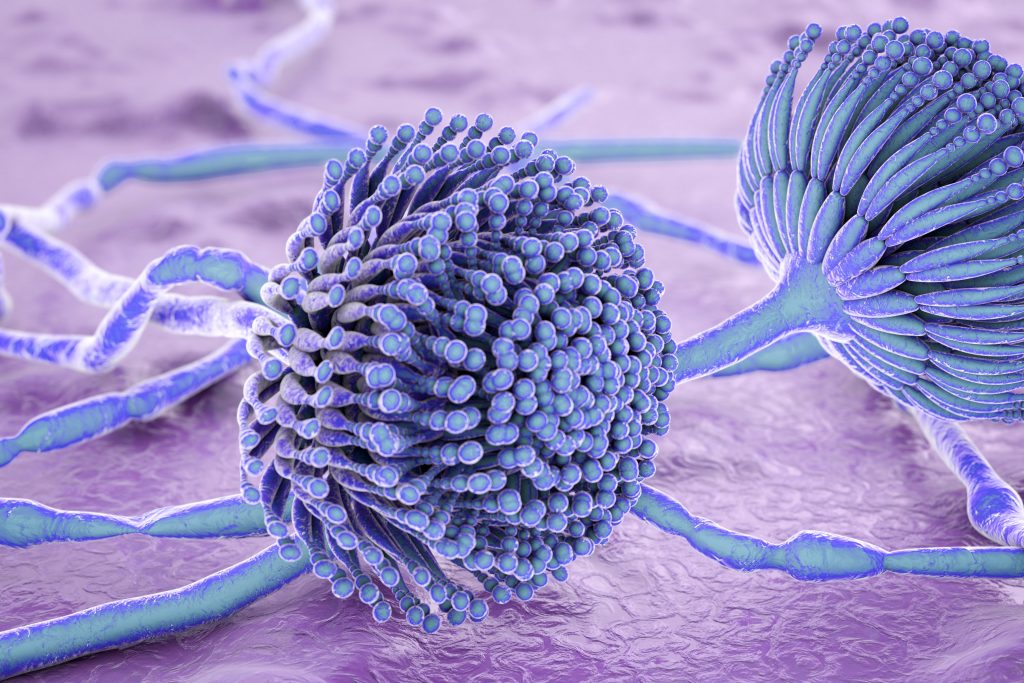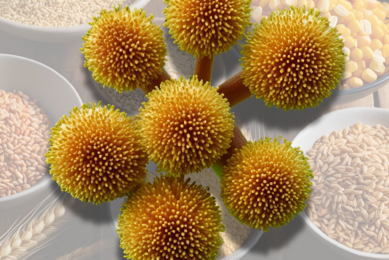Mycotoxins: T-2 toxin mitigation strategies in laying hens

In a recent study, researchers provide an overview of the problems associated with trichothecene mycotoxins in laying hen production, focusing on the Fusarium fungi-derived T-2 toxin and its toxicological effects on performance and egg quality.
The study, which was recently published in the Journal of Agronomy, Technology and Engineering Management, underscores the fact that by understanding the nature of trichothecenes mycotoxins and implementing effective mitigation strategies, producers can ensure the safety, welfare and productivity of laying hens while maintaining the quality and marketability of table eggs for consumers.
Toxicological effects of T-2 toxin
Trichothecenes are produced primarily by fungi belonging to the genera Fusarium, Myrothecium, Trichoderma, and Stachybotrys, and their occurrence in food and feed poses serious health risks and economic consequences due to their stability during processing and resistance to degradation by heat and pH manipulation. In the current study, the focus is on T-2 toxin, a Type A trichothecene produced by the Fusarium genera.
In general, the toxicological effects of trichothecene mycotoxins depend on chemical structure, dose, duration of exposure and species susceptibility. Type A trichothecenes, exemplified by T-2 toxin and HT-2 toxin, are among the most toxic members of the trichothecene family, exhibiting potent cytotoxic, immunosuppressive, and genotoxic effects. These mycotoxins inhibit protein synthesis by binding to the 60S ribosomal subunit, leading to the disruption of cell function and induction of apoptosis in target tissues. Moreover, T-2 toxin and its metabolites can induce oxidative stress, inflammation and lipid peroxidation, contributing to tissue damage and organ dysfunction.
Deleterious effects of T-2 toxin in laying hens
For laying hens exposed to trichothecene-contaminated feed there may be decreased egg production, poor egg quality and increased susceptibility to infectious diseases such as coccidiosis and Newcastle disease. The transfer of trichothecene residues from feed to animal-derived products such as eggs and meat is a threat to human health and consumer safety. In Figure 1, the researchers have summarised the main challenges of T-2 toxin in poultry.
Figure 1 — Detailed summary of the major pathological findings in poultry resulting from exposure to T-2 toxin

Gut health and immunosuppression
Acute exposure to high doses of T-2 toxin can cause severe gastrointestinal disturbances, including feed refusal, diarrhoea, and haemorrhagic lesions in the GIT. These gastrointestinal effects can result in reduced feed intake, impaired nutrient absorption and weight loss in laying hens, ultimately impacting their growth and performance.
On the other hand, chronic exposure to lower doses of T-2 toxin can lead to immunosuppression, increasing the laying hens’ susceptibility to infectious diseases such as coccidiosis, infectious bronchitis and Newcastle disease. The T-2 toxin suppresses the immune response by inhibiting lymphocyte proliferation, cytokine production and antibody formation, compromising the ability to fight off pathogens and increasing the risk of disease outbreaks; immunosuppression can exacerbate the severity of existing infections and delay the recovery of affected birds, leading to economic losses for producers and reduced welfare for laying hens.
Impact on egg quality and safety
It was found that T-2 toxin can accumulate in the ovaries and oviducts of laying hens, leading to the deposition of toxin residues in eggs and contamination of eggs affects their quality attributes, including shell quality, yolk colour and albumen consistency. T-2 toxin has been shown to impair calcium metabolism and reduce shell thickness in laying hens, resulting in increased susceptibility to eggshell fractures and microbial contamination. In addition, the T-2 toxin can interact with lipids and proteins to alter the colour and viscosity of egg yolks and albumen, leading to off-flavours and odours that further diminish sensory quality, marketability and consumer acceptance.

Mitigation strategies
Mitigating the problems of T-2 toxin in laying hen production requires a multi-faceted approach that addresses both the prevention of mycotoxin contamination and the management of contaminated feed and the birds.
The researchers emphasised that mitigation strategies should encompass both pre-harvest and post-harvest interventions such as good agricultural practices, monitoring and testing programmes, physical and chemical detoxification methods, nutritional supplementation and biosecurity measures.
The aim of pre-harvest mitigation strategies should be to reduce the risk of trichothecene contamination in feed ingredients by implementing good agricultural practices and crop management techniques.
Monitoring and testing programmes are essential components of pre-harvest mitigation strategies, allowing producers to assess the risk of mycotoxin contamination in feed ingredients and make informed decisions regarding feed formulation and use. Regular sampling and analysis of feed ingredients for mycotoxin levels can help identify contaminated batches and guide the implementation of appropriate mitigation measures. Additionally, the use of predictive models and risk assessment tools can help anticipate potential mycotoxin outbreaks and inform preventive measures to minimise their impact on laying hen production.
Post-harvest mitigation strategies focus on minimising the impact of trichothecene-contaminated feed on laying hens’ health, performance and egg quality. Proper storage facilities and practices, including adequate ventilation, temperature control and moisture management, are essential for preventing post-harvest mould growth and mycotoxin production in stored grains and feed ingredients. While physical methods such as sorting, cleaning, and thermal processing can help remove or destroy mycotoxin-contaminated grains and feed ingredients, these methods may not be effective in eliminating heat-stable mycotoxins such as T-2 toxins, necessitating additional mitigation measures.
Chemical detoxification agents such as binders and adsorbents can bind mycotoxins in the gastrointestinal tract of laying hens, preventing their absorption and reducing their toxic effects. Binders such as activated carbon, bentonite clay and hydrated sodium calcium aluminosilicate have been shown to effectively reduce the bioavailability of mycotoxins in poultry. The researchers also stated that the use of mycotoxin-degrading enzymes and microbial biotransformation products offers promising strategies for detoxifying contaminated feed and reducing mycotoxin levels in laying hens.
Nutritional strategies such as dietary supplementation with antioxidants, vitamins and minerals can help mitigate the adverse effects of mycotoxin exposure on laying hens’ health and performance. Studies show dietary supplementation with mycotoxin-binding agents such as yeast cell walls, mannan oligosaccharides, and beta-glucans can help improve gut health, nutrient absorption and overall resilience to mycotoxin exposure.
Biosecurity measures are essential components of post-harvest mitigation strategies, aiming to prevent the introduction and spread of mycotoxins in poultry facilities. Strict hygiene practices and proper management of feed storage and distribution can help prevent cross-contamination of feed batches and minimise the exposure of laying hens to mycotoxin-contaminated feed.











